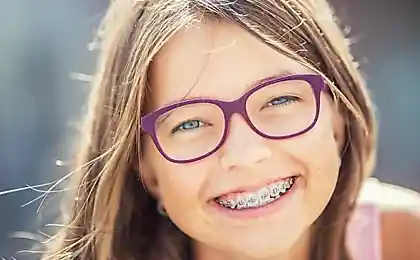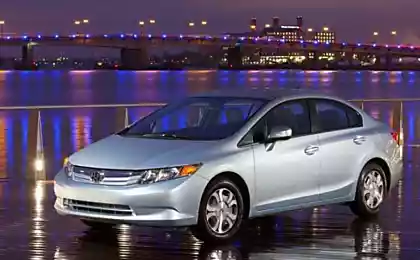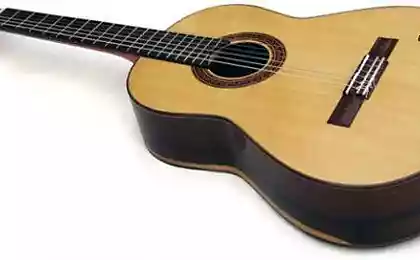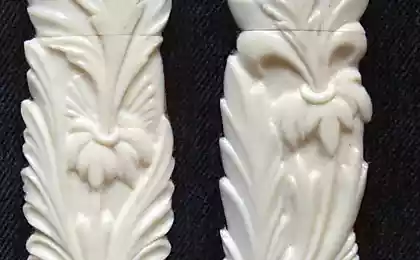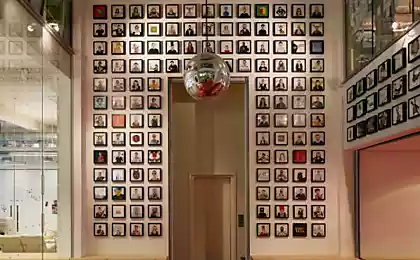1379
Dental instruments of the past (17 photos)
Attention. Nervous and impressionable better not to watch.
Drill-Bow (7000 BC)
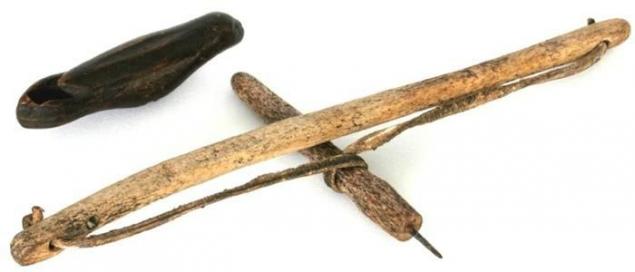
The earliest known dental drill arose about 9,000 years ago in the Indus Valley (modern India and Pakistan). They were built in the likeness of a tool for making fire - wooden bow string is associated with a rotating Spendel - except that instead of receiving fire from the friction, the spindle was used as a drill to penetrate the teeth. (In the photo example of the drill Eskimos the early 20th century.) The Pelican (1600)

Dental Pelicans named because of their resemblance to the beak pelican, used from the 14th century to the late 18th century, when the tooth keys have become more popular (see. Below). This French or Italian Pelican consisted of a rotating claw mounted on the shaft in the regulated slot. The tooth is fixed between the leg and the head of the shaft, and then pulled out.
Dental forceps (1600)
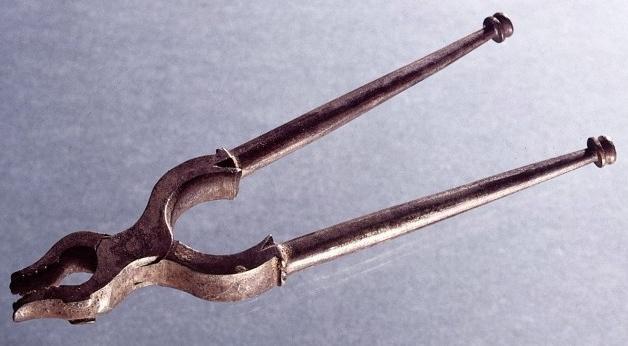
Dental forceps are used to capture and remove the tooth. These tongs Italian XVII century simpler than modern counterparts.
"Obezbolivatel" Wilcox-Jewett (1905)
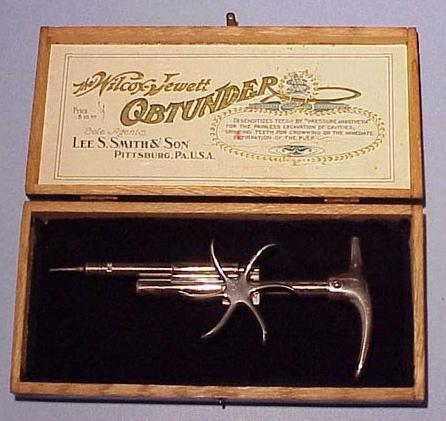
It was a futuristic device - periodontal oral syringe for injection painkillers (usually cocaine).
Dental Key (1810)
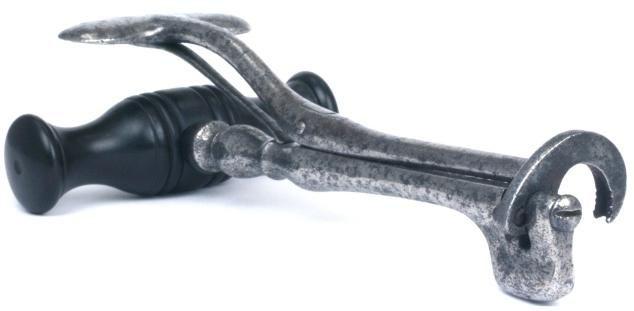
Key named because he was like a door key, but used for the extraction of teeth. The claw on the end of the shaft was designed to catch the bad tooth and rotated to loosen the tooth - a crude method, which often leads to teeth knocked out, damaged tissues and broken jaw. At the turn of the 20th century has become outdated.
Drills "Rotating finger" (1870)
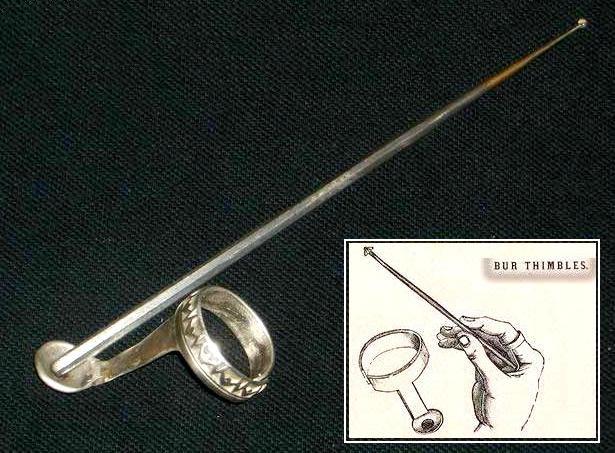
This unusual six-inch length of drill was attached to the tip, which rotates dentist. The rate was much slower than that of other dental drills era who used bow handle, pedals and, ultimately, electricity.
Gag (1600)
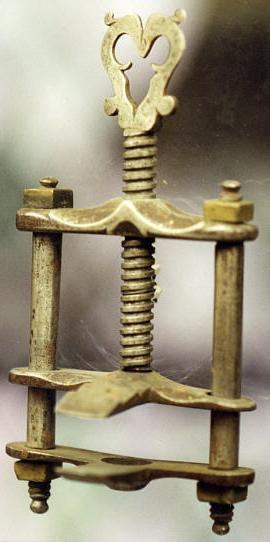
Gag is used for fixing the cavity with the purpose of inspection or medical procedures. This model works as a reverse vise screw for easy access to the patient's mouth.
Secateurs (1810)
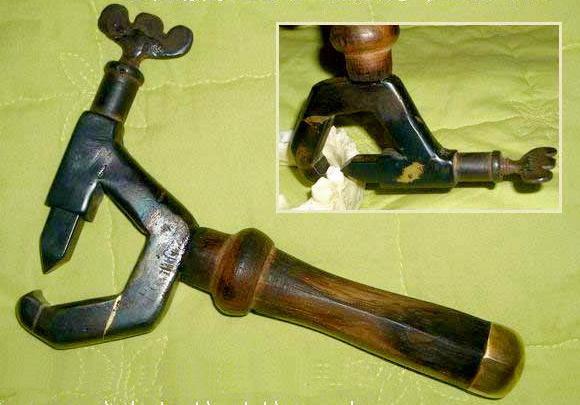
This French orthodontic appliances ("pruner" translated from French - "cutter" or "scissors") treat irregular or diseased tooth, capturing and removing painful tooth, starting with the line just above the gum.
Leg Goats (1700)
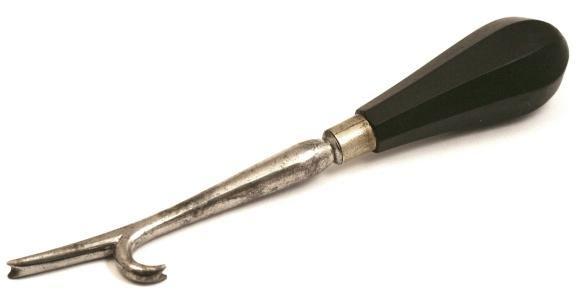
Another extraction tool - Leg goats that their double-pointed tip resembles hoof goats, used in conjunction with other devices. Its main purpose was to help in cleaning up the remnants of the tooth root and tooth fragments as instruments such as the Pelican are often not able to remove the whole tooth and root. Its tapered shape allows it to be inserted into the cavity in order to "raise" the remnants of teeth. Sometimes it is used to loosen the tooth to remove by other means.
Dental Gag (1500)

Dental gag was used to keep the patient's mouth open during treatment. This gag 16th century using the nuts to secure the handle in place. It could also be used to open the mouth of patients suffering from lockjaw.
Dental Screw Forceps (1850)

These unusual American forceps include an expandable screw that using blades cutting into the root of the tooth.
Bone chisel (1780)
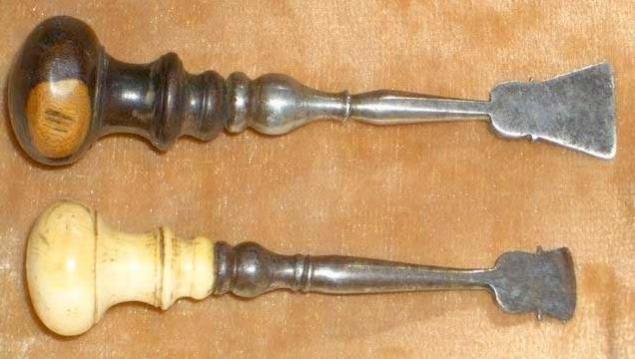
In contrast to the modern dental chisel - small and are mainly used for cleaning old chisel it was great and to use more to extract the tooth. In general, in form and purpose it was similar to the traditional "nezubnoe" chisel.
Crusher language (1850)
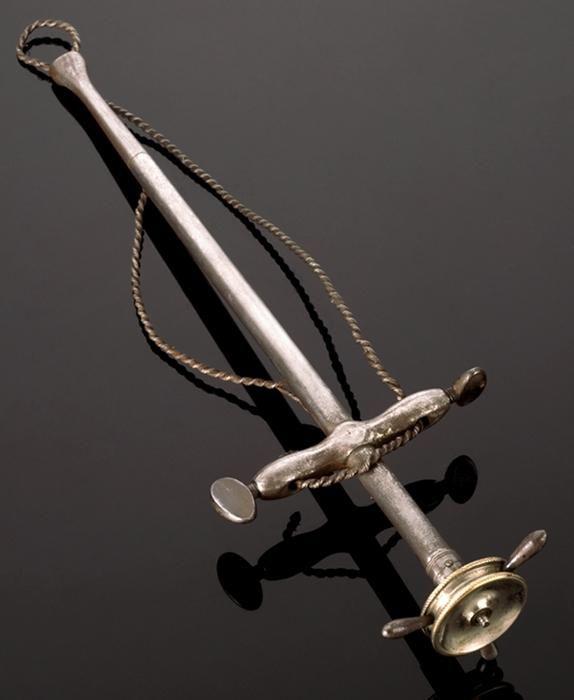
The crusher was used to remove the diseased parts of the language, to prevent the spread of infection. Chain tension band in the infected area and tighten using a ratchet to stop blood flow in the desired area.
This re-creation of one of the oldest known dental drills. The tool of the Stone Age flint island was used for dental treatment. The device was used long before the appearance of dental anesthesia, although it was excruciatingly painful.
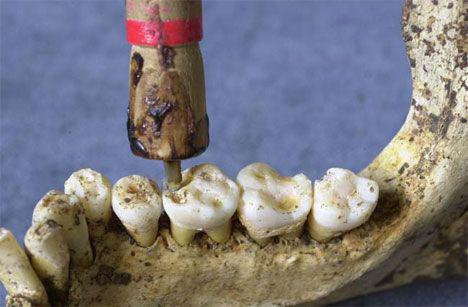
Dental instruments quickly became more complicated, as the example of the 17th century. This unusual combination of forceps and a device for tooth extractions known as "lever Douglas'. As seen in the above image, it is remarkably well-made tool.
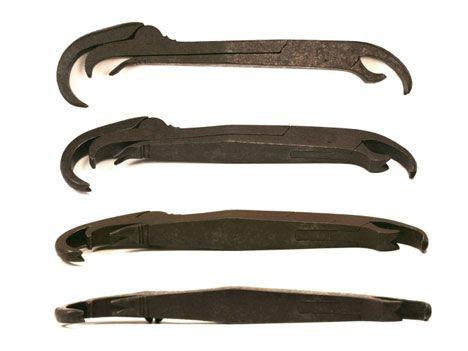
While bad teeth once very quickly removed, advanced dental doctrine allowed to avoid injury and damage. This beautiful engraved device is an early example of clockwork drill; it was the first drill that can be rotated continuously to remove the damaged part of the tooth, and all treatment takes only minutes.
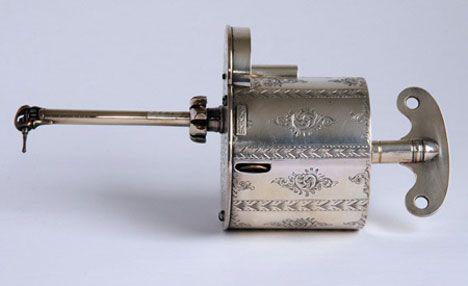
You may be concerned to see a modern dental instruments, decorated with precious stones and ivory, but in the 1800s it was commonplace. In the picture - a beautiful, richly decorated with dental pliers with a ruby in the rod and metal engraving on the entire surface.
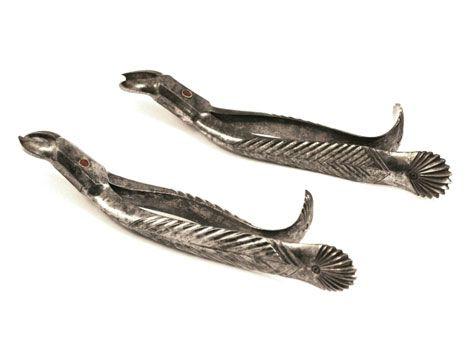
Drill-Bow (7000 BC)

The earliest known dental drill arose about 9,000 years ago in the Indus Valley (modern India and Pakistan). They were built in the likeness of a tool for making fire - wooden bow string is associated with a rotating Spendel - except that instead of receiving fire from the friction, the spindle was used as a drill to penetrate the teeth. (In the photo example of the drill Eskimos the early 20th century.) The Pelican (1600)

Dental Pelicans named because of their resemblance to the beak pelican, used from the 14th century to the late 18th century, when the tooth keys have become more popular (see. Below). This French or Italian Pelican consisted of a rotating claw mounted on the shaft in the regulated slot. The tooth is fixed between the leg and the head of the shaft, and then pulled out.
Dental forceps (1600)

Dental forceps are used to capture and remove the tooth. These tongs Italian XVII century simpler than modern counterparts.
"Obezbolivatel" Wilcox-Jewett (1905)

It was a futuristic device - periodontal oral syringe for injection painkillers (usually cocaine).
Dental Key (1810)

Key named because he was like a door key, but used for the extraction of teeth. The claw on the end of the shaft was designed to catch the bad tooth and rotated to loosen the tooth - a crude method, which often leads to teeth knocked out, damaged tissues and broken jaw. At the turn of the 20th century has become outdated.
Drills "Rotating finger" (1870)

This unusual six-inch length of drill was attached to the tip, which rotates dentist. The rate was much slower than that of other dental drills era who used bow handle, pedals and, ultimately, electricity.
Gag (1600)

Gag is used for fixing the cavity with the purpose of inspection or medical procedures. This model works as a reverse vise screw for easy access to the patient's mouth.
Secateurs (1810)

This French orthodontic appliances ("pruner" translated from French - "cutter" or "scissors") treat irregular or diseased tooth, capturing and removing painful tooth, starting with the line just above the gum.
Leg Goats (1700)

Another extraction tool - Leg goats that their double-pointed tip resembles hoof goats, used in conjunction with other devices. Its main purpose was to help in cleaning up the remnants of the tooth root and tooth fragments as instruments such as the Pelican are often not able to remove the whole tooth and root. Its tapered shape allows it to be inserted into the cavity in order to "raise" the remnants of teeth. Sometimes it is used to loosen the tooth to remove by other means.
Dental Gag (1500)

Dental gag was used to keep the patient's mouth open during treatment. This gag 16th century using the nuts to secure the handle in place. It could also be used to open the mouth of patients suffering from lockjaw.
Dental Screw Forceps (1850)

These unusual American forceps include an expandable screw that using blades cutting into the root of the tooth.
Bone chisel (1780)

In contrast to the modern dental chisel - small and are mainly used for cleaning old chisel it was great and to use more to extract the tooth. In general, in form and purpose it was similar to the traditional "nezubnoe" chisel.
Crusher language (1850)

The crusher was used to remove the diseased parts of the language, to prevent the spread of infection. Chain tension band in the infected area and tighten using a ratchet to stop blood flow in the desired area.
This re-creation of one of the oldest known dental drills. The tool of the Stone Age flint island was used for dental treatment. The device was used long before the appearance of dental anesthesia, although it was excruciatingly painful.

Dental instruments quickly became more complicated, as the example of the 17th century. This unusual combination of forceps and a device for tooth extractions known as "lever Douglas'. As seen in the above image, it is remarkably well-made tool.

While bad teeth once very quickly removed, advanced dental doctrine allowed to avoid injury and damage. This beautiful engraved device is an early example of clockwork drill; it was the first drill that can be rotated continuously to remove the damaged part of the tooth, and all treatment takes only minutes.

You may be concerned to see a modern dental instruments, decorated with precious stones and ivory, but in the 1800s it was commonplace. In the picture - a beautiful, richly decorated with dental pliers with a ruby in the rod and metal engraving on the entire surface.

